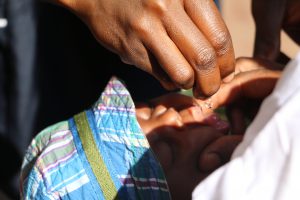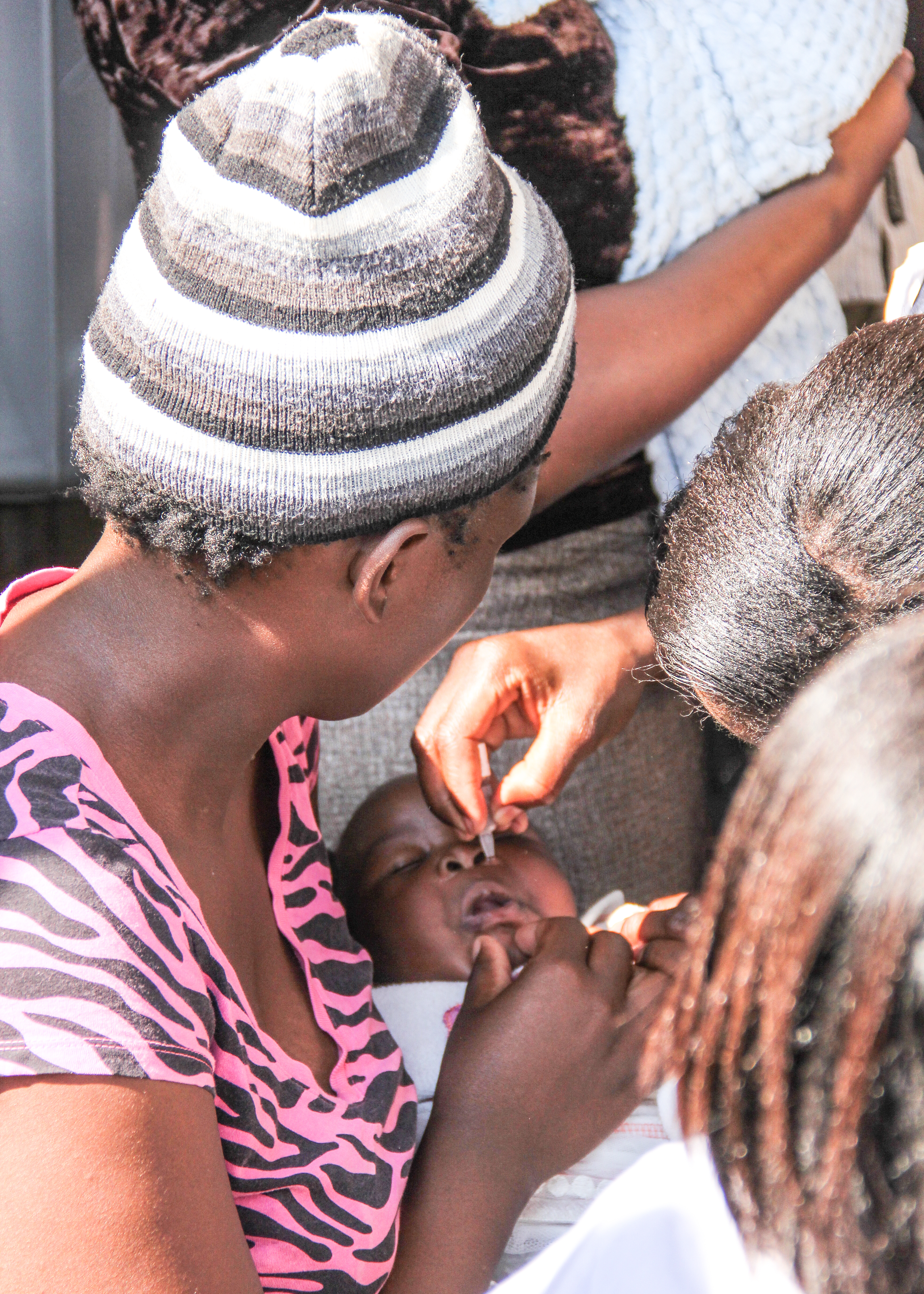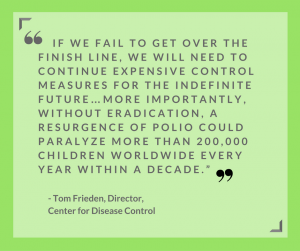World Polio Day 2016: Approaching the Finish Line in Global Polio Eradication Efforts
In terms of improved quality of life and mortality rates, few interventions in the history of medicine have been as successful as vaccinations. The smallpox vaccine was introduced by Edward Jenner in 1796. In 1980, following a historic global campaign of surveillance and vaccination, the World Health Assembly declared smallpox eradicated – the only infectious disease affecting humans to be eradicated in history.
The polio vaccine has a much shorter history. Jonas Salk led the first team to develop a vaccine against poliomyelitis in 1952. At the height of the epidemic, 350,000 polio cases were reported each year, but to date, polio remains an endemic in only three countries – Afghanistan, Nigeria and Pakistan. In 2015, 72 cases of polio were reported worldwide, and we’ve only seen approximately 30 reported cases this year. The progress is promising; with every diminishing case representing one less child that must suffer from fever, fatigue, vomiting, painful limbs and occasionally, severe paralysis. Because there is no cure for the disease, the best way to keep the population polio-free is to maintain high immunity through vaccination.
The dramatic decrease in polio incidence is due largely in part to the launch of the Global Polio Eradication Initiative (GPEI). Since the development of the coalition, billions have been invested in global eradication efforts, and these efforts have paid off, contributing to the 99.9% reduction in cases worldwide.
The eradication of polio is often referred to as a “once-in-a-generation opportunity for global public health.” While there’s no denying that it would be, polio eradication would also signify a defining moment in both national aid efforts and international collaboration. Health workers have traversed through some of the most geographically remote areas that often struggle various barriers to vaccine compliance, including extreme poverty, conflict, and religious or other social barriers. Through the difficulties, we’re inspired by the coalition that’s formed with our local community and abroad that believes all children deserve a shot at life.
We’re on the cusp of a monumental moment in public health and global vaccinations. More than 15 million people are able to walk today, who would otherwise have been paralyzed had the polio vaccine not been developed. We look back to commend the remarkable progress we’ve made, and forward to as we get closer to reaching the finish line of eradicating polio once and for all.
World Polio Day 2016 is Monday, October 24. The day provides an important moment to recognize the historic opportunity the world has to end polio and emphasize the need for continued commitment to achieve eradication. To learn more about the global efforts to eradicate polio visit www.polioeradication.org.



